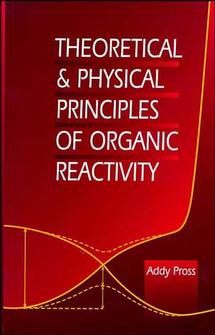Traditionally, physical organic chemistry and theoretical organicchemistry have been treated as separate disciplines. This new bookbridges these two areas in order to give the reader a newperspective on the nature of organic reactivity. A key element ofthis new approach is the author’s extensive nonmathematicaldescription of the recently developed curve-crossing model thatdescribes why chemical reactions have an activation barrier, andspecifies the factors that govern the barrier heights. In addition,the author draws from physical chemistry and transition-metalchemistry to present an original and detailed description ofelectron transfer theory, and covers the recent discovery that theelectron transfer process is intimately related to many basicorganic processes.<br> <br> This book has been divided into three parts to facilitate itsmixture of classical organic chemistry with new and establishedtheoretical ideas. Part A presents an introductory description ofmolecular orbital and valence bond theories with emphasis on thequalitative aspects that can be applied to practical problems inorganic structure and reactivity. Part B describes the keyprinciples of physical organic chemistry and incorporates a mainlyqualitative description of the Marcus theory of electrontransfer.<br> <br> Building on the theoretical framework developed in parts A and B,part C offers an overview of the basic reactions of organicchemistry: nucleophilic and electrophilic substitution, and radicaland pericyclic reactivity. In addition, part C clearly explains themost recent unifying description of organic reactivity for organicchemists and for graduate and advanced undergraduate students.
Chemistry
Theoretical and Physical Principles of Organic Reactivity
₹15,019.00
This book is currently not in stock. You are pre-ordering this book.

